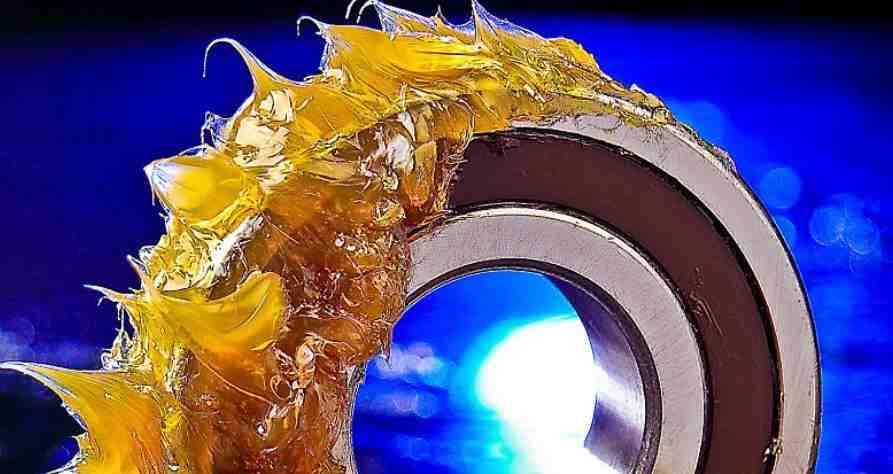Grease is a semisolid lubricant commonly used in machinery to reduce friction, protect against wear, and provide corrosion resistance. The choice of grease depends on the specific application and the operating conditions of the machinery. Here are some common types of grease used in various industries:
Lithium Grease: Lithium Grease is extensively utilized due to its broad application range. With commendable water resistance and robust stability at high temperatures, it is a preferred choice in the automotive and industrial sectors.
Calcium Grease: Calcium Grease, based on calcium compounds, is acknowledged for its resistance to water and strong adhesion characteristics. This type of grease finds frequent application in the agricultural and construction machinery sectors.
Aluminum Complex Grease: This type of grease has excellent high-temperature stability and is commonly used in applications where extreme temperatures are encountered, such as in kilns and ovens.
Polyurea Grease: Polyurea greases offer high-temperature stability, excellent water resistance, and good mechanical stability. They are commonly used in electric motor bearings and other applications where high-temperature performance is crucial.
Sodium Grease: Sodium-based greases are known for their high-temperature capabilities and resistance to water washout. They are often used in high-temperature applications such as steel mills and foundries.
Silicone Grease: Silicone-based greases are resistant to a wide range of temperatures, making them suitable for high-temperature applications. They are often used in electrical applications, rubber and plastic parts, and O-ring lubrication.
Barium Grease: Barium-based greases are known for their high dropping point and resistance to water. They find applications in high-temperature environments.
Complex Soap Grease: Greases with complex soap formulations, such as lithium complex or aluminum complex, offer improved performance in terms of high-temperature stability, water resistance, and mechanical stability.
White Grease: White greases are often formulated with aluminum or lithium soap and are commonly used in applications where cleanliness and visibility are important, such as in the food industry.
Biodegradable Grease: Greases with environmentally friendly formulations are used in applications where there is a need for biodegradability, such as in marine environments.
It’s important to note that each type of grease has its own set of advantages and limitations. The choice of grease should be based on the specific requirements of the machinery and the operating conditions it will face.
Always refer to the manufacturer’s recommendations and guidelines for selecting the appropriate grease for a particular application.
Factors that make grease characteristics excellent

The characteristics that make grease excellent for specific applications are influenced by various factors. The effectiveness of grease in a particular setting depends on its ability to meet the demands of the machinery and operating conditions. Here are key factors that contribute to the excellence of grease characteristics:
Base Oil Type:
The type of base oil used in the grease formulation greatly influences its performance. Common base oils include mineral oil, synthetic oils (polyalphaolefins, polyalkylene glycols), and vegetable oils. The choice depends on factors such as temperature stability, oxidation resistance, and compatibility with other materials.
Thickener Type:
The thickener, or soap, is what gives grease its semisolid consistency. Common thickeners include lithium, calcium, aluminum, polyurea, and complex soaps. The thickener type affects the grease’s temperature resistance, water resistance, and mechanical stability.
NLGI Grade:
The level of consistency in grease is denoted by the NLGI (National Lubricating Grease Institute) grade.Different NLGI grades are suitable for various applications. Lower grades (e.g., NLGI 0 or 1) are often used in high-temperature or high-speed applications, while higher grades (e.g., NLGI 2 or 3) are used in heavy-duty or slower-speed applications.
Additives:
Grease formulations incorporate additives to improve particular characteristics. Common additives include anti-wear agents, extreme pressure (EP) additives, corrosion inhibitors, antioxidants, and anti-foaming agents. The choice of additives depends on the desired performance characteristics.
Dropping Point:
The dropping point is the temperature at which a grease changes from a semisolid to a liquid state. A high dropping point is desirable for applications with elevated temperatures, ensuring that the grease remains effective at higher operating temperatures.
Water Resistance:
Grease formulations may include additives to improve water resistance, making them suitable for applications exposed to moisture or water washout. This is crucial in preventing corrosion and maintaining lubrication effectiveness.
Oxidation Stability:
Greases with good oxidation stability resist degradation when exposed to oxygen and high temperatures. This property is essential for extending the service life of the grease and preventing the formation of harmful by-products.
Compatibility:
Grease should be compatible with the materials in the machinery, including seals and other lubricants. Incompatibility can lead to reduced effectiveness and potential damage to components.
Worked Penetration:
Worked penetration is a measure of the consistency of the grease after it has been mechanically worked. It provides an indication of the grease’s resistance to mechanical shearing forces and its ability to maintain consistency during use.
Pumpability:
For applications involving centralized lubrication systems, pumpability is crucial. Grease should be able to flow easily through the lubrication system to reach the desired lubrication points.
Biodegradability:
In environmentally sensitive applications, biodegradable greases are preferred. These greases break down more readily and have a lower impact on the environment.
When selecting a grease for a specific application, it’s essential to consider these factors in relation to the operating conditions and requirements of the machinery. Additionally, manufacturers often provide guidelines and recommendations for grease selection based on specific applications.



1 thought on “Types of Grease and Their Performance Factors”